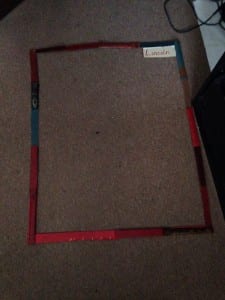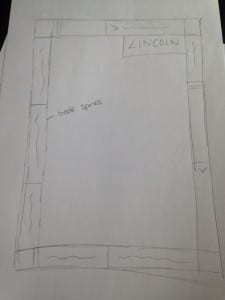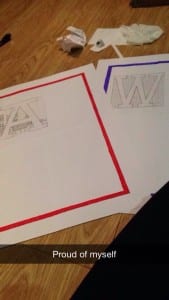The first board I have created for my window features is a frame made of book spines to frame the window that looks onto Lincoln Cathedral. This has been one of my favourite features since I first explored the library. The cathedral is really clear through this window and looks beautiful, and I do not feel like enough people pay attention to this architextual feature. My book spines frame will hopefully encourage students to look out into Lincoln.
Lincoln is also the first station in which the old railway used to stop, this is where the railway would collect the goods from the warehouse. So this window is particularly important.
This is my original sketch for how I wanted the frame to look.
Dan and Conan talked about experimenting with materials and seeing what I could create so this frame is made entirely out of hardback book spines. The use of book spines is a direct and obvious link to the library, as well bringing your focus to the city of Lincoln, Lincoln as a station and the brickwork feature of the back wall of the library.
This is how my art piece has progressed:

Rebecca Elizabeth Bierton

